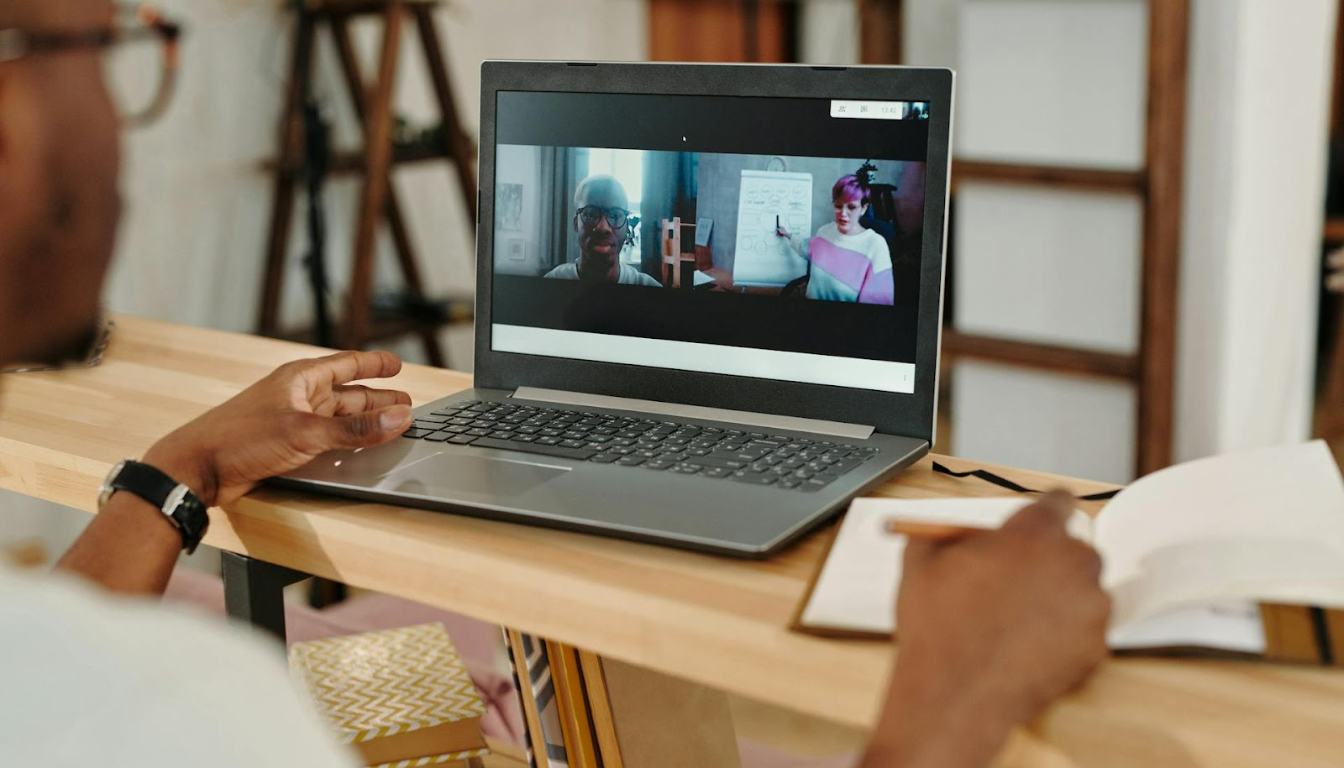Best Practices for Running Effective Catch-Up Meetings

Catch-up meetings are informal check-ins that help teams stay aligned and build stronger relationships. This article covers the purpose of these meetings, their benefits, and tips for conducting them effectively.
Key Takeaways
- Catch-up meetings foster open communication and trust among team members, differentiating them from more formal performance reviews.
- Regular catch-ups enhance team dynamics, increase productivity, and improve job satisfaction by encouraging inclusive dialogue and personal connections.
- Effective preparation and a balanced agenda for catch-up meetings are essential for ensuring productive discussions and team alignment.
Understanding Catch-Up Meetings

Catch-up meetings are casual, fostering open discussion. Unlike formal performance reviews, these meetings focus on creating a safe space where team members can share their impressions and feelings without the pressure of a rigid agenda. The primary purpose of a catch-up meeting is to build rapport and trust among team members, making them feel valued and integral to the company’s success.
At their core, catch-up meetings are designed to keep team members informed about project progress and aligned on tasks. They emphasize the importance of individuals within the team, ensuring that everyone feels heard and understood. This focus on personal connection and open communication is what sets catch-up sessions apart from more traditional, formal meetings.
The Difference Between Formal and Informal Meetings
Differences between formal performance reviews and informal catch-up meetings:
- Formal performance reviews are structured and follow a specific schedule.
- Informal catch-up meetings are casual and flexible.
- The friendly atmosphere of a catch-up meeting promotes open communication, making it easier for team members to express their thoughts and feelings.
- Formal meetings often focus on performance metrics and deliverables.
- Catch-up meetings prioritize the individual and their experiences.
The informal nature of catch-up meetings can significantly enhance team dynamics. These informal chats foster meaningful conversations and stronger connections in a casual setting, creating a supportive environment where team members are comfortable sharing ideas and concerns. This blend of personal and professional interaction fosters a sense of belonging and mutual respect within the team during an informal gathering.
Benefits of Regular Catch-Ups

Regular catch-up meetings offer numerous benefits, including enhanced team dynamics, increased productivity, and higher job satisfaction. Structured catch-up meetings can improve operational efficiency by ensuring that all team members are aligned and informed.
Holding catch-up meetings weekly or bi-weekly maximizes these benefits, depending on the team’s needs. Catch-ups can take various forms, from informal coffee chats to structured reviews, based on the team’s culture and goals.
Enhancing Team Communication
Effective catch-up meetings actively promote open communication by encouraging open communication among team members to share their thoughts and feedback. Creating a safe environment where team members can express their concerns without fear of judgment is crucial for fostering open and honest dialogue. Regularly addressing feedback helps maintain open channels of communication, enhancing overall team productivity through effective communication.
Engaging teams through regular catch-up meetings helps reduce feelings of isolation, especially in remote teams. Encouraging team input during meetings ensures that all voices are heard, fostering an inclusive environment that supports collaboration and mutual support. This practice not only improves team dynamics but also contributes to a supportive work culture where everyone feels valued.
Strengthening Team Relationships
Catch-up meetings play a crucial role in building and strengthening relationships among team members. These meetings create an enjoyable and interactive atmosphere, allowing team members to connect personally, fostering trust and understanding. This personal connection is essential for developing a cohesive team that works well together and supports each other.
Regular catch-up meetings provide opportunities for team members to share experiences and get to know each other better. This shared understanding encourages open communication and collaboration, contributing to a positive and productive work environment. The informal nature of these regular meetings makes it easier for team members to express their thoughts and feelings, further strengthening team relationships.
Improving Team Well-Being
One important goal of catch-up meetings is to assess the well-being of the team. These meetings serve as a valuable opportunity for evaluation. These meetings provide a platform for team members to voice their concerns and share insights about their experiences, which is invaluable for maintaining a healthy work environment. Team feedback gathered during catch-up meetings should be taken into account as soon as possible to address any issues and improve overall well-being.
Overscheduling can lead to employee exhaustion, so it’s important to find the right balance in scheduling regular catch-ups. Encouraging employees to assess their accomplishments and identify areas for improvement before the meeting can enhance the effectiveness of these catch-ups.
Focusing on key points and areas for improvement helps maintain a supportive work environment and promotes a healthy work-life balance.
Conducting a Successful Catch-Up Meeting

Conducting a successful catch-up meeting requires thorough preparation and a clear catch up meeting agenda. Effective catch-up meetings ensure that all topics are relevant and aligned with participants’ schedules. A well-defined agenda helps maintain structure and focus, preventing off-target discussions that can decrease productivity. A good catch up meeting is essential for achieving these goals.
Engagement can be boosted by asking simple, interesting questions and creating an environment that puts participants at ease. Following up on action items discussed in the meeting ensures accountability.
Setting Clear Objectives
Defining clear objectives for a catch-up meeting is vital to ensure attendees know what to expect and to avoid pointless discussions. Establishing a clear objective helps both parties remain focused and productive throughout the meeting.
Regular catch-ups can clarify team roles and expectations, enhancing overall team cohesion. Effective preparation involves reviewing previous discussions and outcomes, allowing for more productive conversations during a training session.
Preparing an Agenda Ahead
Having a meeting agenda template for a catch-up meeting is crucial as it provides structure and direction to the discussion. An agenda helps ensure that all important points are addressed and that the meeting’s objectives are met.
Creating an agenda helps in organizing thoughts, making the catch-up more efficient. This preparation encourages candid discussions among team members, enhancing the effectiveness of the meeting.
Balancing Business and Personal Topics
Balancing business and personal topics in catch-up meetings helps interlocutors feel comfortable sharing their feelings. Important topics to discuss include:
- Project updates
- Team member progress
- Personal growth
- Challenges
Discussing personal lives during catch-ups enhances relationships among team members, allowing them to speak freely and fostering a more cohesive and supportive environment.
Tips for Remote Teams

Remote catch-up meetings are essential for bridging the communication gap created by physical distance. These meetings are particularly valuable in remote work settings to enhance communication and productivity.
Creating a warm and welcoming atmosphere is crucial for remote catch-up meetings to encourage open communication in a relaxed and friendly atmosphere. Online catch-up meetings are an effective solution for colleagues not working in person at the office.
Leveraging Technology
Technology plays a crucial role in facilitating effective catch-up meetings, especially when working remotely. Utilizing video conferencing tools allows team members to engage visually, fostering a more connected atmosphere.
Collaboration platforms can be used to keep notes, organize information, and share updates, making it easier for teams to track discussions and action points. Overall, leveraging technology enhances communication and efficiency, leading to more productive and meaningful catch-up meetings.
Fostering Engagement
Incorporating interactive elements such as icebreakers can enhance participation and make remote meetings more engaging. Utilizing round-table formats encourages all participants to share their thoughts during discussions. Engagement in remote meetings is crucial for maintaining team connection and encouraging meaningful contributions.
These engagement techniques foster a supportive atmosphere, leading to improved team dynamics and productivity.
Common Challenges and Solutions
One of the common obstacles in catch-up meetings includes:
- Over-scheduling, which can lead to burnout and decreased effectiveness.
- Ineffective communication, which can lead to misunderstandings and hinder collaboration.
- Lack of comfort among participants in sharing honest opinions, which prevents open discussion.
Following up after catch-up meetings is essential to ensure effective action on discussed items and maintain accountability. Collecting feedback about the meetings can help determine their value and frequency, leading to improvements and follow up questions.
Avoiding Over-Scheduling
Catch-up meetings should be scheduled sparingly to prevent burnout and avoid cluttering calendars. Consistent scheduling of catch-up meetings is important as it helps maintain the well-being and engagement of team members.
Teams can find the right meeting cadence for catch-up meetings by evaluating meeting times and asking for feedback.
Encouraging Open Discussion
Creating a psychologically safe environment allows team members to express concerns without fear. These meetings enable team members to share personal challenges and encourage mutual support.
Asking for constructive feedback at the end of a catch-up meeting is crucial to gain insights that might be difficult to share in formal settings. Implementing structured informal discussion techniques can help ensure that all voices are heard during two way conversations and that participants actively listen carefully to receive and discuss feedback, and engage in open discussions to feel heard.
Preparing for Your Next Catch-Up Meeting
Reviewing notes from the last meeting is essential for preparing for the next catch-up meeting to ensure everyone is on the same page. This ensures continuity and helps identify any unresolved issues that need to be addressed.
Gathering Updates and Metrics
Clear meeting objectives help attendees understand what to expect and prepare accordingly. Collecting performance data prior to the meeting enables informed discussions regarding progress and challenges.
Utilizing performance metrics and previous feedback can guide the collection of relevant updates before the performance review meeting.
Reflecting on Progress and Goals
Encouraging self-reflection on personal achievements and goals allows employees to contribute meaningfully to the conversation. This practice helps ensure productive discussions and alignment on future goals.
Examples of Effective Catch-Up Meetings

Effective catch-up meetings are essential for maintaining team alignment, sharing updates, and fostering connections among team members. Recent events help illustrate best practices and encourage teams to structure their own meetings more effectively.
Weekly Progress Review
A typical agenda for a weekly review progress includes discussing what went well, identifying challenges, and setting priorities for the upcoming week. This structured approach to weekly catch-ups enhances team collaboration and boosts overall productivity.
Monthly Career Development
Monthly meetings dedicated to career development should focus on personal development and long-term aspirations for team members. Finding the right balance between discussing project developments and personal growth keeps meetings engaging and comprehensive.
Encouraging team members to reflect on their progress and discuss progress in setting actionable goals is critical for meaningful discussions during career development meetings.
Summary
Effective catch-up meetings are a cornerstone of successful team collaboration and communication. By understanding their purpose, differentiating them from formal meetings, and implementing best practices, teams can significantly enhance their dynamics and productivity. Whether conducted in-person or remotely, regular catch-up meetings foster a supportive and connected work environment. As you prepare for your next catch-up meeting, remember to set clear objectives, prepare an agenda, and create a balance between business and personal topics. Using collaborative tools like Offsite can streamline this preparation, helping you organize topics and keep everyone on the same page. Build stronger, more connected teams through effective catch-ups.
FAQs
- What is the primary purpose of a catch-up meeting?
The primary purpose of a catch-up meeting is to create a safe environment for team members to share updates, build rapport, and stay informed about project progress and tasks. This fosters collaboration and alignment within the team.
- How do catch-up meetings differ from formal meetings?
Catch-up meetings prioritize informal communication and personal connection, while formal meetings adhere to a structured agenda and specific timelines. This difference fosters a more relaxed atmosphere in catch-up meetings that can enhance team cohesion.
- What are some benefits of regular catch-up meetings?
Regular catch-up meetings significantly enhance team dynamics and communication, fostering stronger relationships and increasing overall job satisfaction. Prioritizing these meetings can lead to a more cohesive and productive work environment.
- How can technology be leveraged for remote catch-up meetings?
Utilizing video conferencing tools and collaboration platforms can significantly enhance communication during remote catch-up meetings, ensuring discussions and action points are tracked effectively. This approach fosters engagement and accountability among team members.
You may also like
Unique spaces for your next offsite
Find distinctive venues for your upcoming corporate retreat.
Stay Updated with Our Insights
Get exclusive content and valuable updates directly to you.







